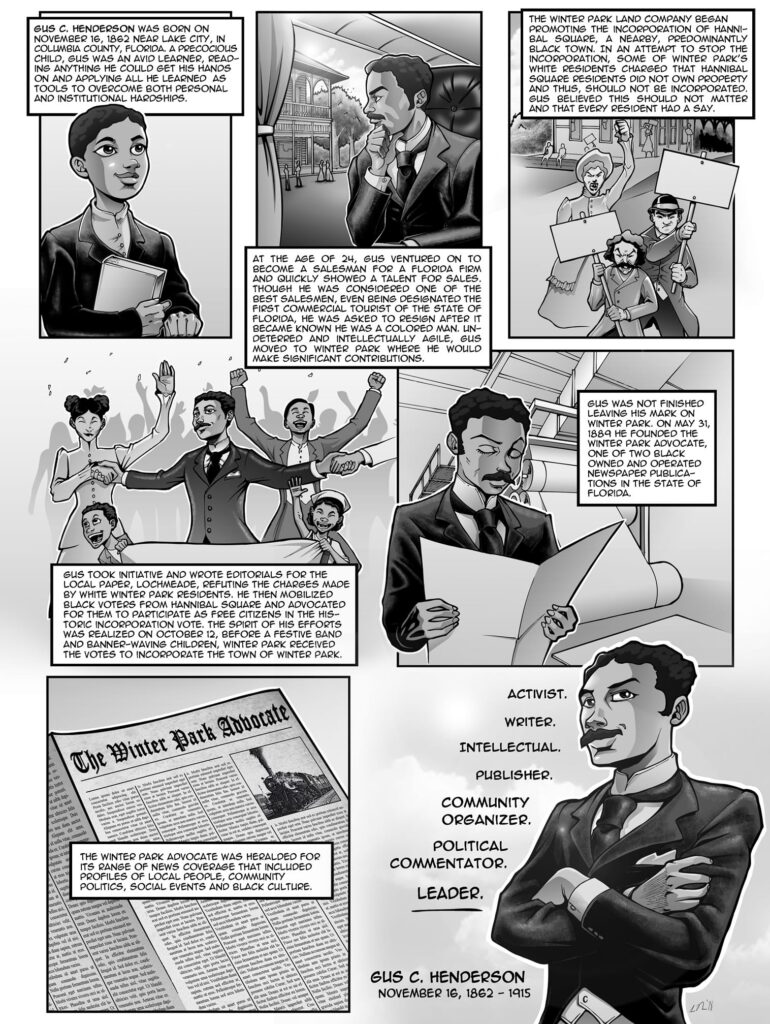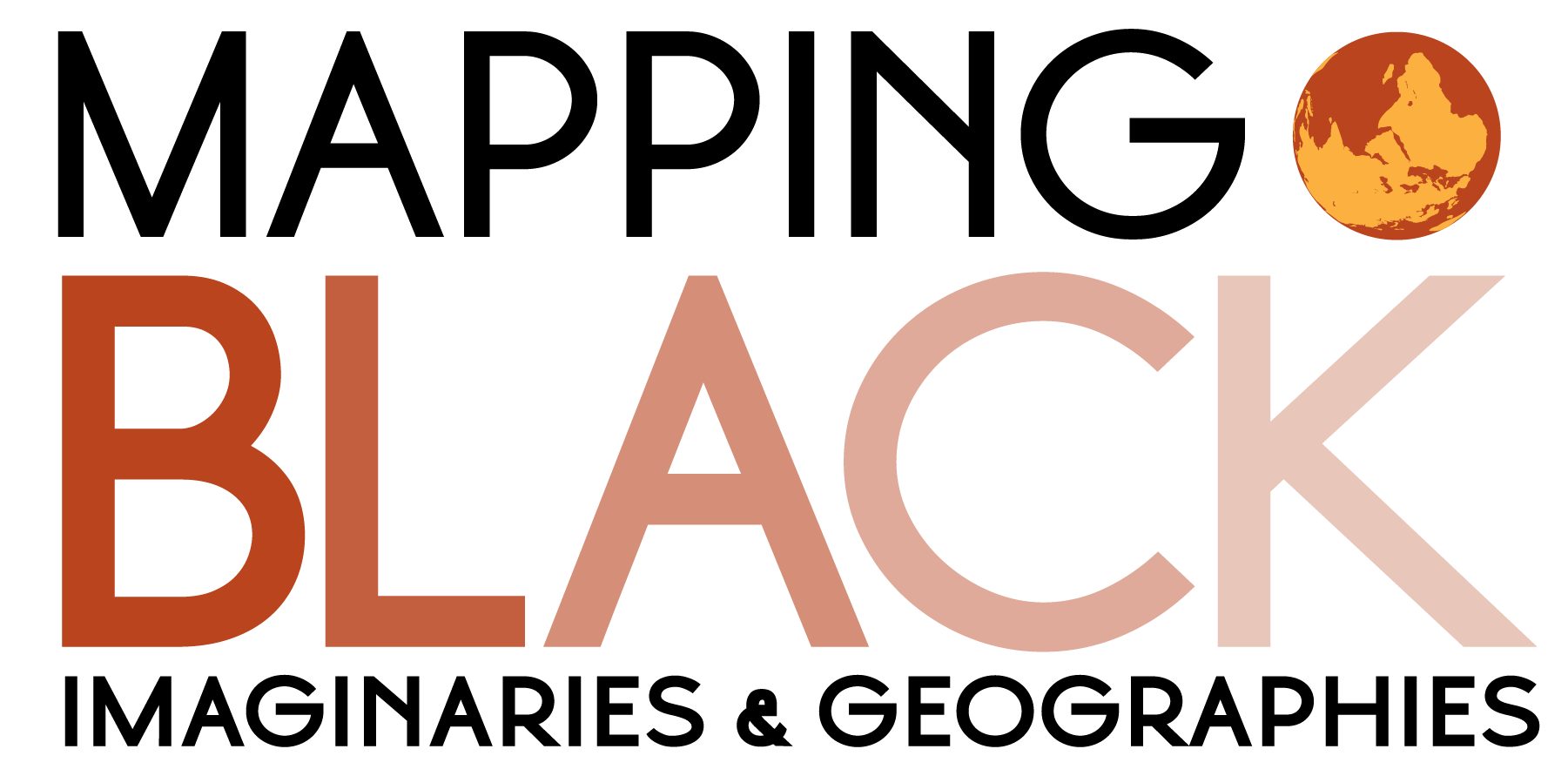The idea of a Black Social World (BSW) grows from the relations that are evident among the African American communities that developed after Reconstruction in Florida. Celebrated by Booker T. Washington, Eatonville was destination for blacks across the region. This national awareness factors into my conception of the Tuskegee Universe, which looks to the public narratives about black economic sustainability so crucial to Washington’s persona in the early 20th century, but it also links the legacy of black agency in communities like Hannibal Square to wider national concerns.


The Gus Henderson bio comics was project that grew out of my work with the Hannibal Square Community Land Trust. The goal was to bring attention to the black history of the historic community. In many ways the historical “fact” on display in the comics are a matter of public record, but this single page brought Henderson to life. The artwork from Selim Nurudeen captured Henderson’s vibrant character. Rather think of him as an outlier, Henderson’s vision matched an African American vision of freedom and prosperity that shaped black communities in the region.
Advocate Recovered (AR) is a critical making digital recovery project designed by Dr. Julian C. Chambliss from the Department of English at Michigan State University. This project grew from a digital simulation examining the political life of the African-American community in Winter Park, Florida.
The goal of this project is to recover the contents of The Winter Park Advocate, an African-American newspaper published in Winter Park, Florida. For decades the history of the African-American experience after the Civil War in the United States has been an important focal point for historians

This map, created by Dr. Scot French (University of Central Florida), outlines Richmond Planet agents and depots, ca. 1897. This map highlights the regional information network of one Black newspaper.
This map, created by Dr. Julian Chambliss, utilizes information from the 1916 edition of the Negro Year Book, a publication of The Department of Records and Research led by Monroe Work at Tuskegee University. The NYB was designed to be a record of black progress. The NYB provided detailed information on black spaces ignored by the white press.
